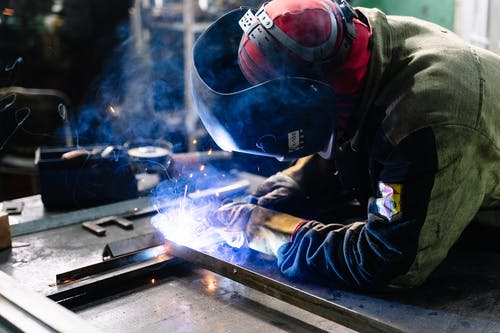
As economies reopen around the world, the price of materials has soared, including the prices of prominent industrial metals. The extent to which these materials’ price rally may vary depending on multiple factors.
As a recent study from the IMF and chart shows, metals prices have increased by 72 percent relative to their pre-pandemic levels—reaching a nine-year high in May (in adjusted terms). The increases have been consistently seen across industrial metals—copper is up 89 percent in May (year-over-year), iron ore is up 116 percent, and nickel is up 41 percent. The prices of other commodities are also tracking upward, but at a slower rate.
Why have some metals prices increased much more than other commodities? There are many different ways to explain, but here are 4 key points according to a recent study by the IMF:
1. A manufacturing-based recovery: Manufacturing activity did not slump as much at the start of the pandemic and recovered more quickly than services, especially in China, which is the major user of metals. At the same time, sectors in which energy commodities feature prominently, like the transportation sector, remain depressed. For example, global road fuels consumption is still at 93 percent of pre-pandemic levels, restraining a further rebound of petroleum prices.
2. Supply-side factors: Many mining operations were temporarily disrupted by COVID-19. What’s more, freight rates for the transportation of bulk materials reached a ten-year high due to congestion in key ports, quarantine restrictions, ongoing problems staffing shipping crews, and a rebound in fuel prices from the deep troughs in Spring 2020. This all added to the cost of metals.
3. Expectations for faster energy transition and infrastructure spending: Buoyant expectations about the pace of the transition to a greener economy and ambitious infrastructure programs gave metals prices an additional boost. Both would increase the “metal intensity” of the global economy. A fast energy transition, for example, could require a 40-fold increase in the consumption of lithium for electric cars and renewables, while the consumption of graphite, cobalt, and nickel for these purposes may rise around 20 to 25 times, according to the International Energy Agency. Ambitious infrastructure programs in the European Union and the United States would drive up the demand for copper, iron ore, and other industrial metals.
4. Storability of metals: Metals are easier to store than crude oil or some agricultural goods, which need special facilities. This makes their pricing more forward looking and, thus, more sensitive to changes in interest rates (lower interest rates reduce the “cost of carry,” which also includes cost of storage, insurance, and other expenses, and, thus, tend to support commodity prices) and market expectations, such as the ones about a faster energy transition and infrastructure spending.
We know that prices have continued to go up since this summer and there is still a difficult path ahead. It is important to partner with a company like Allis-Roller who is successfully navigating these changes and will continue to do so, no matter what lies ahead.
